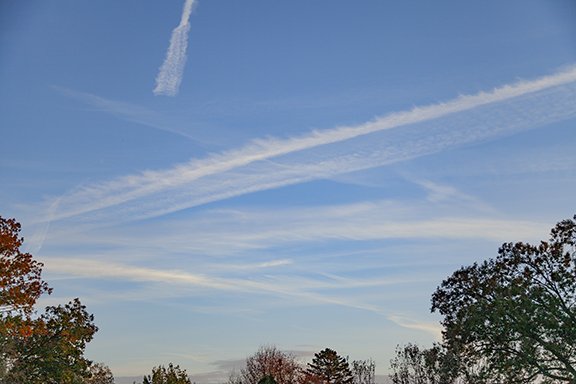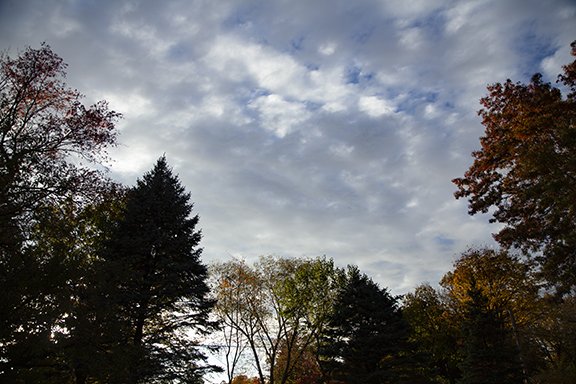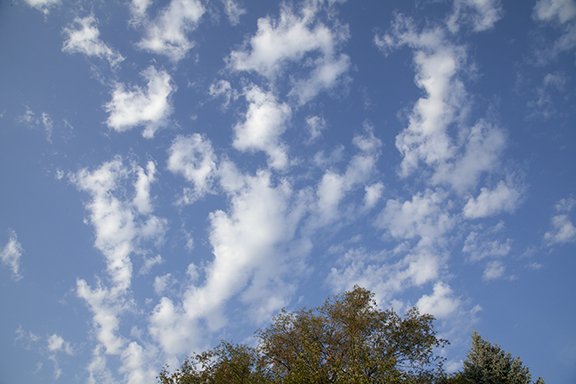Clouds of the Day - Fountains in the Sky - Thursday, November 2, 2023
/This layer of Altocumulus covered much of the sky for part of this afternoon. Each individual cell features a pillow-like cloud separated from its neighbors by a thin blue line of sky or a line of suppressed cloud cover. The pattern fills this photo.
Each ‘pillow’ cloud forms at the top of a fountain of rising air. The surrounding line of blue sky or suppressed cloud is where the vertical motion air is down, not up. The ‘pillow’ forms where the column of rising air reaches its condensation level and forms a cloud. The cloud layer is thin because the air above the cloud is stable and moving down. The air stops rising at the top of each cloud and spreads out and sinks creating the pattern of ‘pillow's.
The up and down vertical air motions are likely moving only a few inches per second. Compare that with a severe thunderstorm that may have updrafts that exceed 60 mph.
The photo below points out three individual cloud cells out of the hundreds visible in the cloud layer. The entire sky is filled with these cells which show us where columns of rising air are forming clouds and sinking air is clearing the sky around fountains of rising air. columns. The fountains are invisible except where the clouds have condensed. Each fountain is surrounded by a thin curtain of sinking air.
Altocumulus stratiformis - hundreds of cloud cells in a stratified layer, Hence the name
Altocumulus Floccus
More examples of the ‘pillows’ caused by fountains of rising air in the middle levels.











































































































